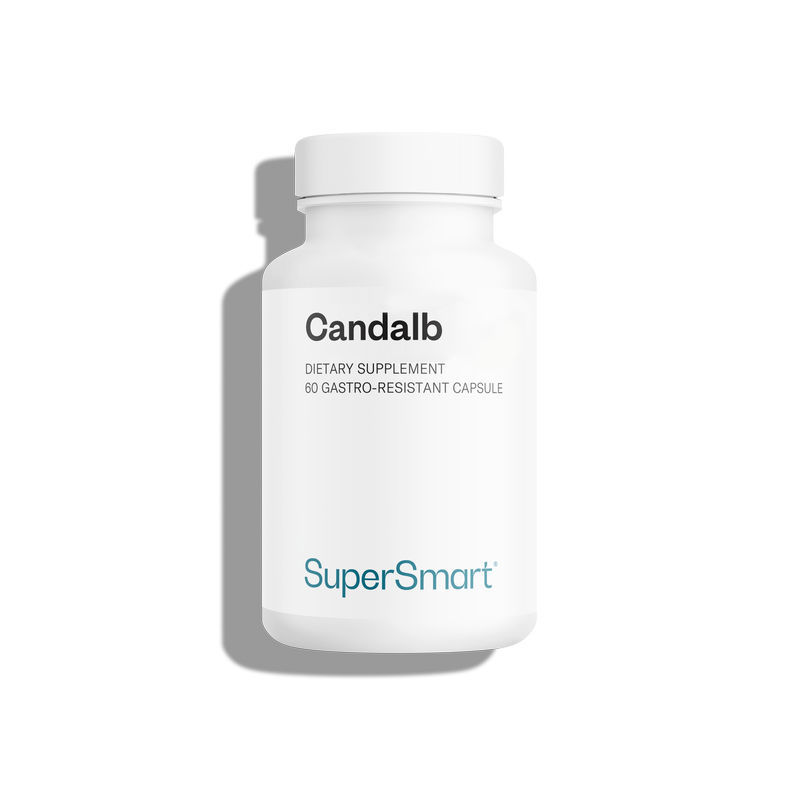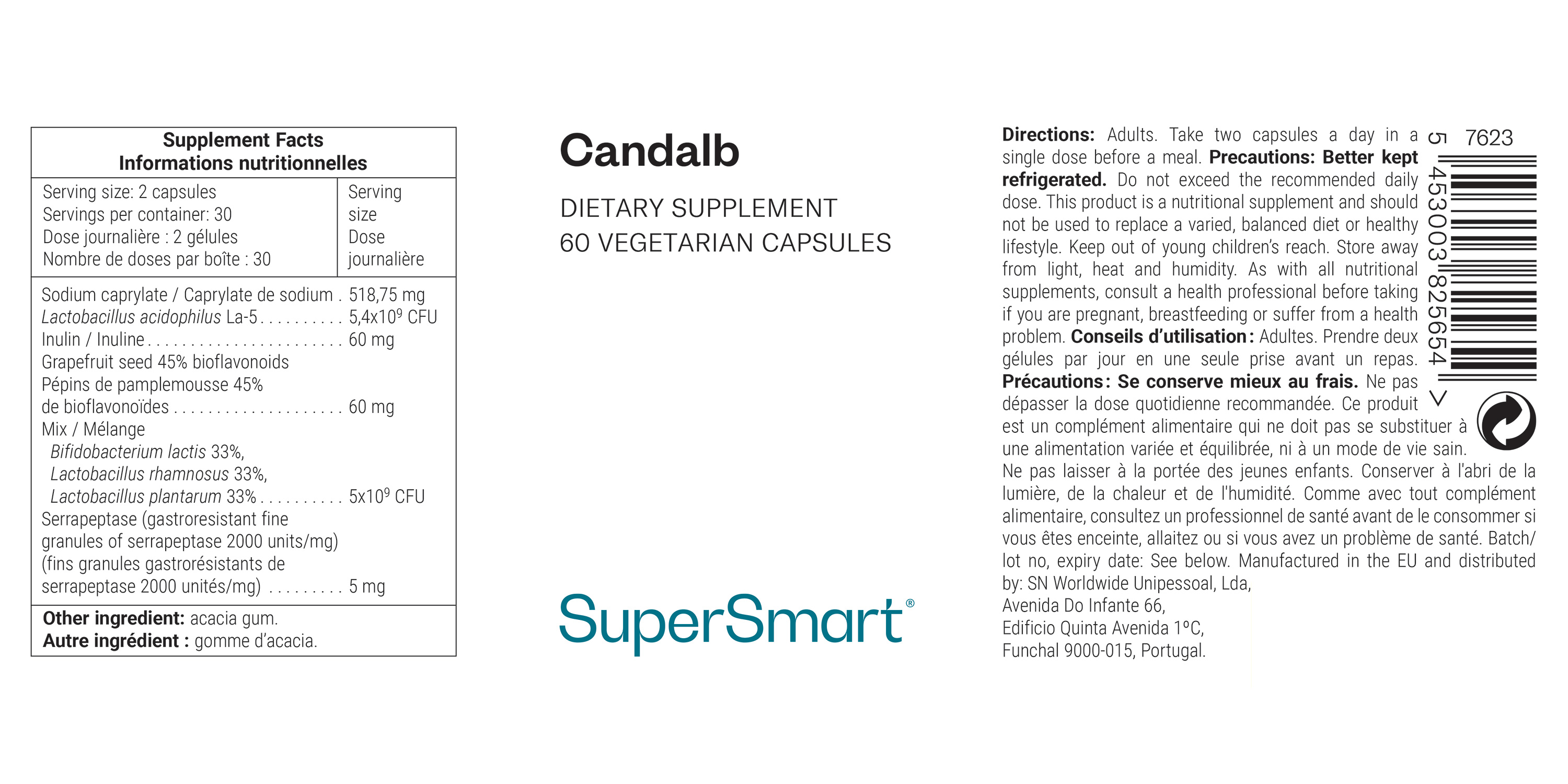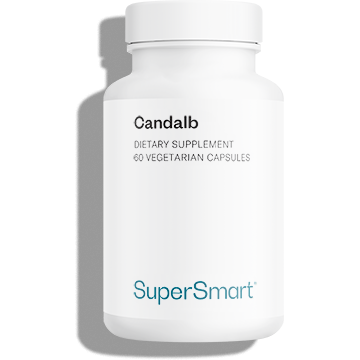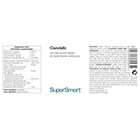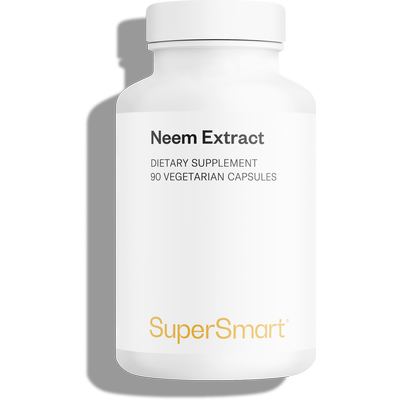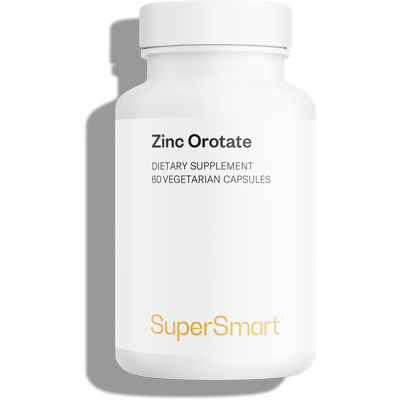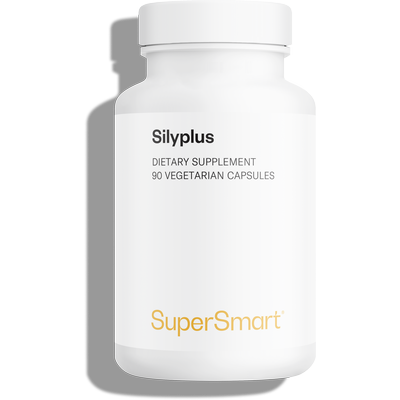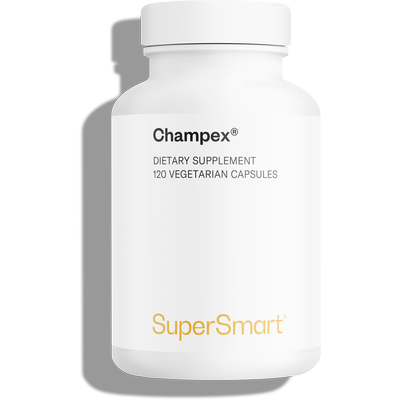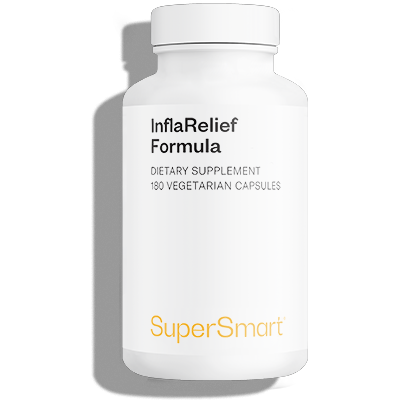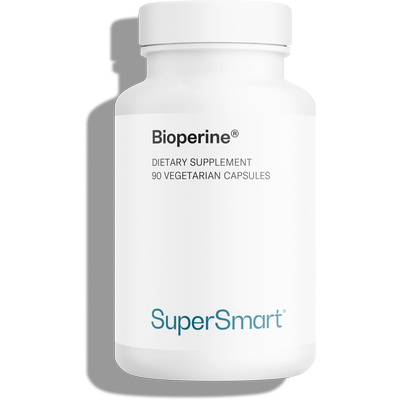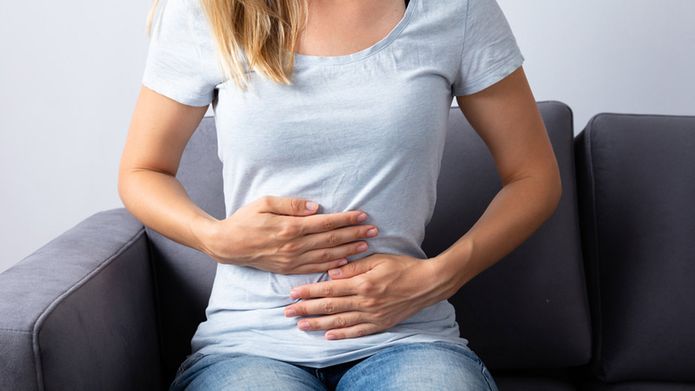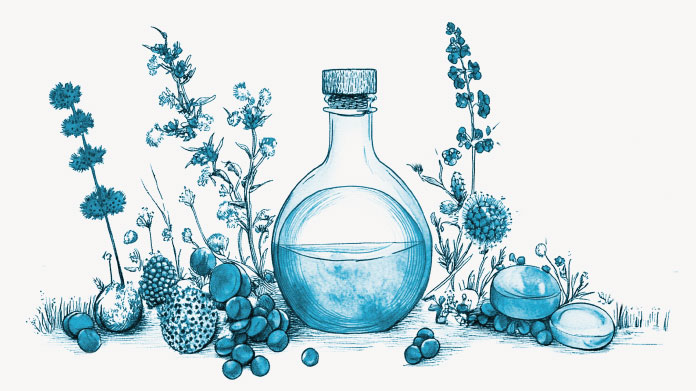Auf Lager
Candalb
Probiotisches Nahrungsergänzungsmittel bei einer Pilzinfektion mit Candida albicans
Ergänzen Sie Ihre Auswahl
Candalb ist ein Nahrungsergänzungsmittel zur natürlichen Unterstützung des Kampfes gegen das abnormale Wachstum der HefepilzeCandida albicans und Candida glabrata, als Ergänzung zu medikamentösen Behandlungen. Wegen ihres Reichtums an Caprylsäure an spezifischen Probiotika , Präbiotika und Serrapeptase trägt sie dazu bei, das innere Gleichgewicht wiederherzustellen.
Was ist eine Candida-Infektion?
Hefepilze der Gattung Candida sind Organismen, die natürlicherweise im Verdauungstrakt, in der Mundhöhle und im Genitalbereich vorkommen. Normalerweise sind sie nicht krankheitserregend, da das Gleichgewicht zwischen den verschiedenen Mikroorganismen der Mikrobiota ihre Ausbreitung begrenzt (1). Wenn das Gleichgewicht jedoch gestört ist, können sie zu gefährlichen Krankheitserregern werden, die in der Lage sind, verschiedene Gewebe und Organe des menschlichen Körpers zu infiltrieren (2). Man bezeichnet sie als "opportunistisch". Die Hefepilze Candida albicans und Candida glabrata sind die häufigsten opportunistischen Mikroorganismen, die beim Menschen vorkommen (3).
Die vulvovaginale Candidose, die hauptsächlich durch Candida albicans verursacht wird, ist eine der häufigsten gynäkologischen Infektionen: Schätzungen zufolge ist mehr als jede zweite Frau davon betroffen (4). Diese Infektionen treten in der Regel in der zweiten Hälfte des Menstruationszyklus bei Frauen auf, die genital aktiv sind.
Die Entwicklung einer Candidose verläuft klassischerweise in zwei Phasen:
- Kolonisation, die in der Regel durch die Schutzwirkung des Speichels und die des Schleims begrenzt wird (5). Die Hefepilze vermehren sich abnormal, schaffen es, sich massiv auf einer ebenen Fläche (meist der Schleimhaut) anzusiedeln, bis sie einen Biofilm bilden, eine Art Barriere, die aus einer stark strukturierten Ansammlung von Zellen und verschiedenen Proteinen gebildet wird. Dieser Biofilm macht sie für natürliche Antimykotika weniger zugänglich und ermöglicht es ihnen, in einer für sie normalerweise feindlichen Umgebung zu überleben (6). In diesem Biofilm entwickeln sich die Zellen weiter und werden komplexer: Einige nehmen eine faserige Form an, andere eine zylindrische oder ellipsoide Form. Diese Zellen artikulieren sich untereinander und bilden eine sehr dichte, dreidimensionale Struktur. Sie ist ein wahres Keimreservoir, das vom Immunsystem wie auch von Medikamenten nur schwer neutralisiert werden kann (7).
- Die Invasion der Schleimhaut, die durch ein Defizit der zellulären Immunität erleichtert wird (8). Die Bildung des Biofilms wird von zwei invasiven Phänomenen begleitet: an der Spitze der Struktur verteilen sich Zellen, um an anderer Stelle im Körper neue Biofilme zu bilden, während die Fadenzellen in die verschiedenen Schichten der Epithelzellen eindringen, die die Schleimhäute bilden (9). Wenn sie nicht aufgehalten werden, können diese über den Blutkreislauf verschiedene Bereiche des Körpers erreichen.
Woraus besteht Candalb, die ergänzende Lösung gegen Candida?
Nehmen Sie einen Monat lang zwei Kapseln zu einer der Hauptmahlzeiten mit einem großen Glas Wasser ein. Bei Bedarf zu wiederholen.
Das Nahrungsergänzungsmittel Candalb wurde nach den neuesten wissenschaftlichen Erkenntnissen entwickelt. Es enthält insbesondere:
Eine spezifische Mischung aus Probiotika (Lactobacillus acidophilus La-5, Bifidobacterium lactis, Lactobacillus rhamnosus, und Latobacillus plantarum). Mehrere klinische Studien haben die starke antimykotische Wirkung von Laktobazillenstämmen gegen Biofilme von Candida albicans zum Vorschein gebracht (9). Eine davon zeigte die Fähigkeit von Lactobacillus rhamnosus das Wachstum, die Morphogenese (die Phase, in der die Zellen faserig werden) und die Adhäsion an die Schleimhaut von Hefepilzen der Gattung Candida zu beeinträchtigen. Im Allgemeinen könnten Probiotika auch dazu beitragen, die Darm- und Vaginalmikrobiota wieder ins Gleichgewicht zu bringen (10).
Caprylsäure ist eine mittelkettige Fettsäure (MCT), die häufig verwendet wird, um die Vermehrung von Candida albicans zu hemmen. Sie wird insbesondere in dem Buch Candidose besiegen von Leon Chaitow und Simon Martin empfohlen. Es kommt insbesondere in der Muttermilch von Säugetieren, in bestimmten Pflanzenölen wie Kokosöl und in einigen Samen vor (11). Mehrere In-vitro-Studien (12-14) haben die Anti-Candida-Aktivität der Caprylsäure gezeigt. Dieses Molekül soll insbesondere dazu beitragen, die Ausbreitung des von Hefepilzen geschaffenen Biofilms sowie das Fadenwachstum zu bremsen, indem es die Expression bestimmter Gene moduliert.
Ein Grapefruitkernextrakt, standardisiert auf 45 % Bioflavonoide. Grapefruitkerne werden umfassend auf ihre potenziellen antimykotischen Eigenschaften (insbesondere gegen Candida albicans) sowie ihre antimikrobiellen und entzündungshemmenden Wirkungen untersucht.
Serrapeptase (5 mg bzw. 10.000 IE), ein proteolytisches Enzym, das dabei hilft, Giftstoffe zu reduzieren und abgestorbene Zellen aufzulösen, die für Entzündungen verantwortlich sind (15). Es ist nicht ratsam, es mit blutverdünnenden Naturheilmitteln wie Kurkuma, Knoblauch oder Omega-3-Ergänzungsmitteln zu kombinieren.
SuperSmart hat sich nicht nur für die Gefriertrocknung entschieden, um seine probiotischen Nahrungsergänzungsmittel zu entwickeln, sondern auch daran gedacht, einen natürlichen, schützenden Inhaltsstoff hinzuzufügen: Inulin. Dieses unverdauliche Kohlenhydrat, das auf natürliche Weise aus der Zichorienwurzel gewonnen wird, dient ebenfalls dazu, das Wachstum der Probiotika zu stimulieren, sobald sie in den Mund-Darm-Trakt gelangen (16).
Zusammensetzung Candalb
Sie haben Fragen? Oder Bedenken?
Unser Team aus Ernährungsexperten und Wissenschaftlern hat Antworten darauf.
Die Symptome einer Candidose hängen davon ab, wo die Besiedelung stattfindet. Wenn diese in der Mundhöhle oder in der Speiseröhre stattfindet, sind vor allem zu verzeichnen:
- Soor auf Zunge, Gaumen und Zahnfleisch (gelblich-weiße, feste oder zusammenfließende, an der Schleimhaut haftende Läsionen) ;
- kongestive Rötungen auf der Zunge und in der Speiseröhre.
Wenn die Besiedlung im Genitalbereich stattfindet:
- Starkes Brennen im Bereich der Vulva;
- Juckreiz;
- weißlicher Ausfluss;
- Rötung in der Eichel, meistens beginnend im Frenulum und / oder der Balano-Präputialfurche.
In den meisten Fällen verläuft diese Candidose günstig, aber Rückfälle sind häufig. Es kommt vor, dass der Pilz die Schleimhäute durchdringt und sich dann vorübergehend im ganzen Körper ausbreitet. Er sondert dort krankheitserregende Moleküle ab (79 bekannte Toxine), die das Immunsystem weiter schwächen und zu verschiedenen Symptomen führen können (große Müdigkeit, wiederholte Verdauungs- und Darmbeschwerden, Schlafprobleme, Magenschmerzen usw.)
Mit einem großen Glas Wasser auf nüchternen Magen oder mindestens zwei Stunden nach einer Mahlzeit.
Die richtige Strategie zur Bekämpfung dieses hartnäckigen Hefepilzes besteht sowohl darin, durch geeignete Behandlungen auf sich selbst einzuwirken, als auch darin, die Regulationsfähigkeiten des Körpers wiederherzustellen. Hier sind einige gut dokumentierte Tipps, um alle Chancen auf Ihrer Seite zu haben:
- vermeiden Sie den Verzehr von zuckerreichen Lebensmitteln und solchen, die Speisehefe enthalten (Candida albicans ist ein süßebedürftiger Pilz);
- Setzen Sie den Tee aus der inneren Rinde des Lapacho ein, der traditionell gegen Hefeinfektionen (Candidose) eingesetzt wird;
- Beachten Sie ätherische Öle, insbesondere Oregano-, Nelken- und Zimtöl, die sehr relevant sind, laut dem Buch von Dr. Eric Lorrain, En finir avec la candidose.
- Alle Menschen, die einen Mangel ihres Immunsystems vermuten.
- Menschen mit Mangelerscheinungen (insbesondere an Vitamin A, B-Vitaminen, Vitamin C, Zink und Eisen).
- Menschen mit einer Überernährung an Kohlenhydraten.
- Menschen mit Diabetes, insbesondere Menschen mit unkontrolliertem Diabetes (17-18). Chronische Hyperglykämie wird nämlich mit einer Fehlfunktion bestimmter Immunzellen - der Granulozyten - und damit mit einer verminderten zellulären Immunität in Verbindung gebracht.
- Menschen, die eine Antibiotika-Behandlung oder bestimmte Medikamente erhalten haben, die das Gleichgewicht der Mikrobiota stören. Antibiotika stören die Flora und tragen zu einer Besiedlung der Schleimhäute mit Candida albicans.
- Menschen mit einer Vorgeschichte von Magenoperationen..
- Menschen, die unter (körperlichem und/oder emotionalem) Stress, Mangelerscheinungen (Zink, Kupfer, Eisen, Mangan, usw.) und mangelnder körperlicher Aktivität leiden.
- Menschen über 65 Jahre(19-21), insbesondere aufgrund einer verminderten Wirksamkeit des Immunsystems und aufgrund des häufigen Tragens von Zahnprothesen.
- Menschen mit Hyposialie, d. h. mit einer geringeren als der normalen Speichelproduktion.
Sollte Candalb Forte im Kühlschrank aufbewahrt werden?
Es wird empfohlen, das Produkt bei niedrigen Temperaturen und geringer Luftfeuchtigkeit zu lagern, um eine möglichst große Anzahl "lebensfähiger" probiotischer Bakterien zu erhalten.
Dennoch führt eine Aufbewahrung bei Raumtemperatur nur zu einer sehr geringen Abnahme der lebensfähigen Bakterien, sobald sie nicht länger als einige Wochen dauert. Dies wurde durch die Zugabe von natürlichen Inhaltsstoffen - Inulin - ermöglicht, die speziell das Überleben der Probiotika bei ungeeigneten Temperaturen erhöhen.
Die Kapseln dieses Produkts bestehen aus HPMC (Hydroxypropylmethylcellulose), einer pflanzlichen Substanz, die aus Cellulose gewonnen wird. HPMC wird üblicherweise für Medikamente und Nahrungsergänzungsmittel verwendet. Sie enthält keine tierischen Inhaltsstoffe, ist von den Gesundheitsbehörden als sicher anerkannt und nachhaltiger als synthetische Alternativen.
Bewertungen
Dieses Produkt wurde mit 4.6 von 5 Sternen bewertet.
Wir haben 21 Bewertungen gesammelt.
76%
14%
5%
0%
5%
6 November 2025
M’a enlevé le brouillard cérébral et la fatigue chronique qui me minait depuis 10 ans.
11 Januar 2025
9 Januar 2025
Produit très efficace
Sehr wirksames Produkt
 siehe die Übersetzung
Übersetzt von SuperSmart - Original anzeigen
siehe die Übersetzung
Übersetzt von SuperSmart - Original anzeigen
5 November 2024
Je ne l'utilise pas depuis longtemps, mais je constate déjà des effets positifs sur mon transit intestinal.
Ich benutze es noch nicht lange, aber ich bemerke bereits positive Effekte auf meinen Darmtransit.
 siehe die Übersetzung
Übersetzt von SuperSmart - Original anzeigen
siehe die Übersetzung
Übersetzt von SuperSmart - Original anzeigen
26 September 2024
Produit qui a l’air de fonctionner contre ma candidose intestinale… j’en suis qu’à la première boîte !
Produkt, das gegen meine Darmkandidose zu wirken scheint... Ich bin erst bei der ersten Packung!
 siehe die Übersetzung
Übersetzt von SuperSmart - Original anzeigen
siehe die Übersetzung
Übersetzt von SuperSmart - Original anzeigen
Sie brauchen Hilfe?
Telefon
Schreiben Sie uns
Das könnte Ihnen auch gefallen
oder Geld zurück

